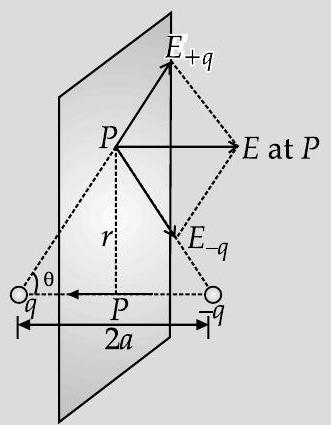electric-charges-and-fields Question 18
Question: Q. 8. Two point charges
A [CBSE SQP 2013]
Show Answer
Solution:
Ans. We have
[AI Q. 1. (i) Derive the expression for electric field at a point on the equatorialline of an electric dipole.
(ii) Depict the orientation of the dipole in (i) stable, (ii) unstable equilibrium in a uniform electric field.
A [Delhi I 2017]
Ans. Derivation of expression of electric field on equatorial line of electric dipole Depiction of orientation for stable and unstable equilibrium in electric field

(i) Let the point ’
and
[CBSE Marking Scheme, 2013]






